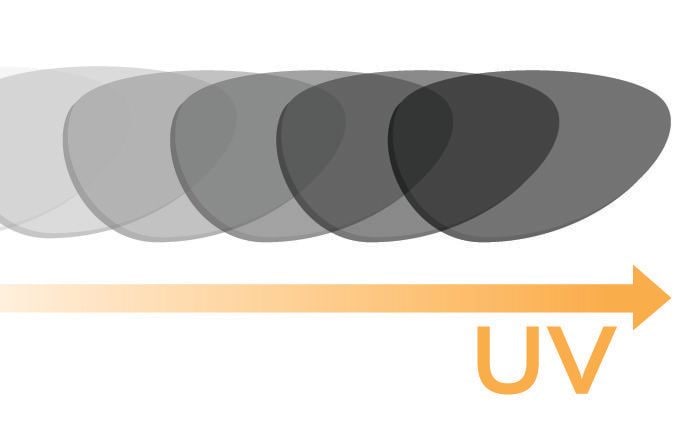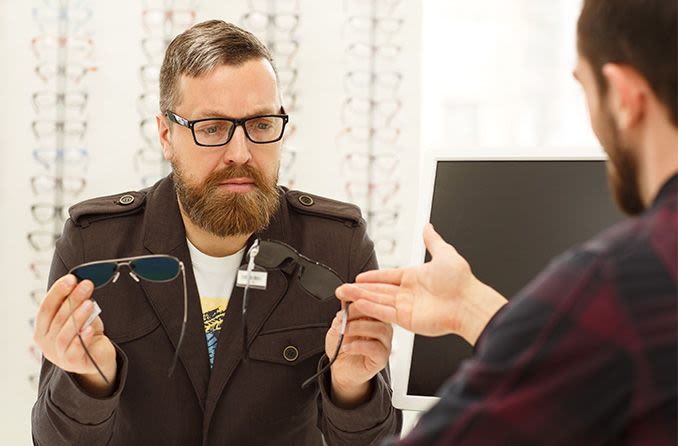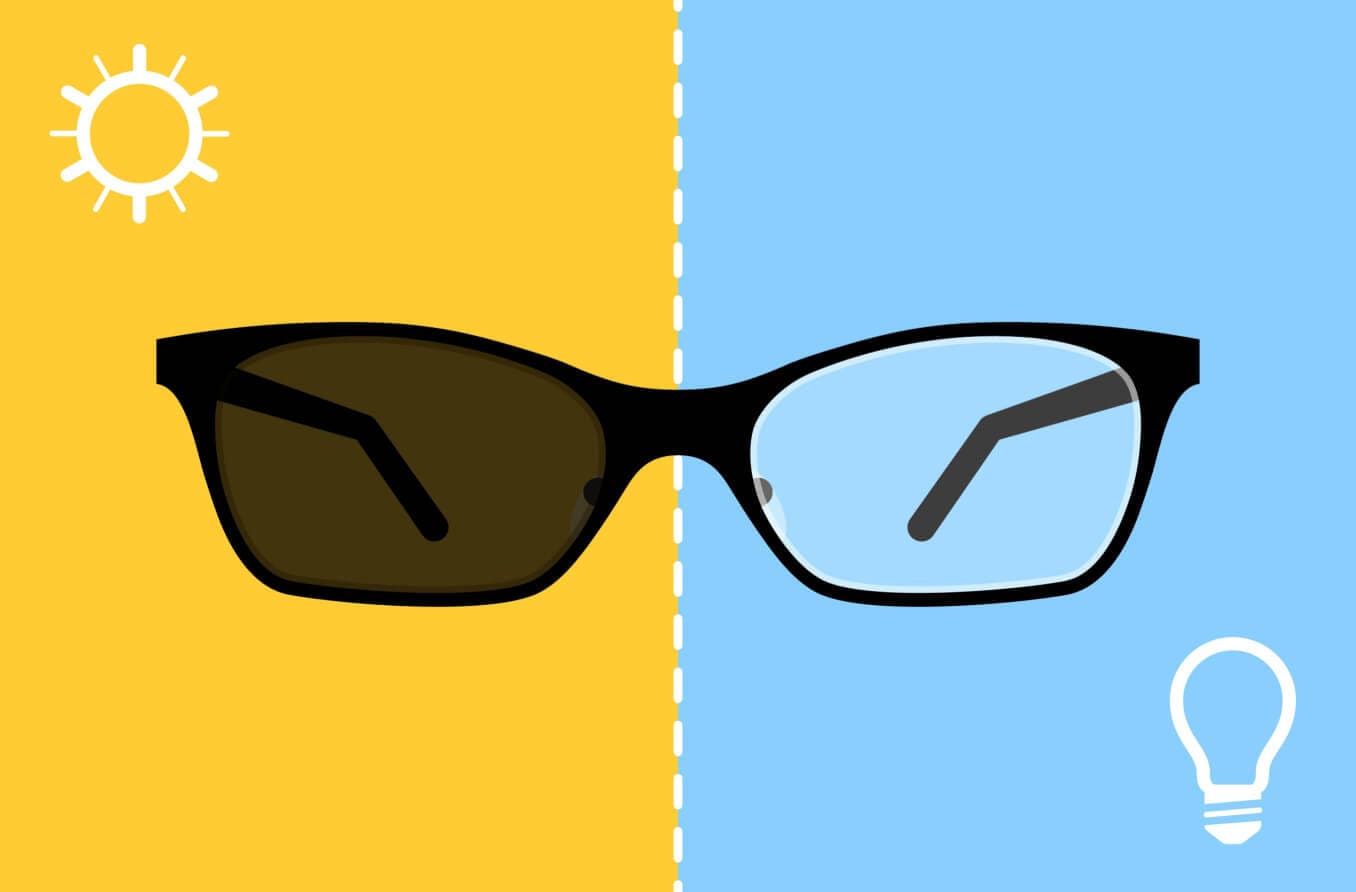How long does it take photochromic glasses to change to sunglasses?
It takes approximately 30 seconds for your clear photochromic lenses to darken, and the tint on your lenses may continue to change gradually (and subtly) to an even darker shade for the first 10 minutes that you’re outside. Photochromic lenses return to a transparent state within five minutes or less once you’re back indoors.
The exact amount of time it takes for these light sensitive lenses to adjust can vary depending on temperature, the amount of ultraviolet (UV) ray exposure, as well as their age and exact chemical composition (which can depend on the brand).
SEE RELATED: Photochromic vs. Transition Lenses
How do photochromic lenses work?
Sunlight sensitive lenses have specialized dyes embedded in or bonded to their surface. These dyes contain molecules that undergo a chemical reaction whenever they come into contact with UV rays.
The trillions of sunlight-sensitive molecules in every photochromic lens change shape and structure when exposed to UV radiation. As a result, they can absorb visible light, so the eyeglass lenses darken. Since light sensitive lenses react to UV rays, not visible light, they’ll automatically darken outdoors even on cloudy days but not inside under artificial lighting.
The chemical process that changes sunlight-sensitive lenses from light to dark and vice versa is also affected by factors such as temperature. This explains why light sensitive lenses take longer to darken when it’s cold outside. The molecules inside the lenses move and change shape more slowly in colder temperatures, whereas light sensitive lenses may adjust their tint more quickly on scorching days.
Additionally, light-adjusting lenses can absorb 100% of UVA and UVB rays, offering full protection from the most damaging radiation emitted by the sun. Like sunglasses, photochromic lenses can reduce your risk of developing eye conditions like cataracts, macular degeneration, corneal sunburn and retinal tissue damage linked to excess sunlight exposure over time.
SEE RELATED: What are photochromic sunglasses?
Do photochromic lenses wear out?
Light sensitive lenses can lose their ability to darken over time. On average, photochromic lenses will begin to wear out in about three years.
How will you notice your photochromic lenses are becoming less effective? They will develop a yellowish tinge while in their clear state and no longer darken fully outdoors.
Are photochromic lenses worth the price?
Eyeglasses with light sensitive lenses can cost upward of $400, depending on the lens material, type, coatings, varying levels of tint options added and whether your lenses are prescription-grade.
When comparing prices, however, keep in mind that you’ll need to pay for only one pair of eyeglasses if you choose photochromic lenses. They’ll do the work of two pairs: one for indoor wear and sunglasses for everyday outdoor use.
Though eyeglasses with photochromic lenses can’t be substituted for sunglasses in all situations, they’re often a wise investment.
THINKING OF GETTING LIGHT SENSITIVE LENSES? Add photochromic lenses when you shop for eyeglasses at an optical store near you or an online eyewear retailer.










